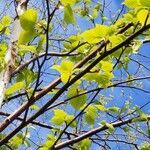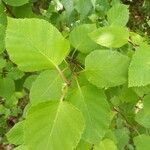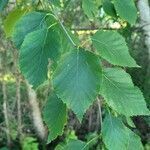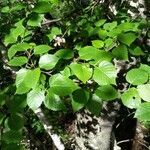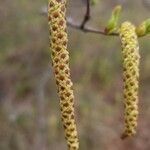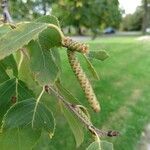Usually a small to middle-sized tree, occasionally to 30 m, often slightly leaning rather than strictly erect; bark white or nearly so, with horizontal (often semilunate) black marks about the branches, easily separable into thin layers, the peeled plates showing salmon-pink on the inside; lvs ovate, 5–10 cm, acuminate, sharply serrate or doubly serrate, cuneate to rounded at base, glabrous above, very sparsely pubescent beneath, usually only along the veins or in the vein-axils; fruiting catkins 3–5 cm; scales 3.9–6.2 mm, two-thirds to fully as wide, the lateral lobes broadly falcate-obovate, divergent, the middle lobe tapering; frs oblate, deeply retuse, broadly winged, 1.8–3.4 ×2.7–5 mm, the body 0.9–1.5 mm wide; mostly polyploid, often 2n=70. Seral in moist or dry soil after fire or other disturbance; Lab. to Alas., s. to N.J., W.Va., n. Ind., and ne. Io. Becoming very dwarf at and above timberline in the White Mts. of N.H. and perhaps elsewhere. Most of our plants are var. papyrifera, as described above. The well marked but wholly confluent var. cordifolia is separately described.
A tree. It grows 18-25 m high. The trunk can be 40 cm across. It has tough papery bark. It is white and peels off in thin curling layers. (Some forms have orange white bark.) It has a sparse crown. The leaves are oval or triangle shaped. They are 5-10 cm long. The tip is pointed and the base is wedge shaped. Leaves have double teeth. The leaves are dull green above and paler underneath. The flowers are separately male and female. The male or pollen flowers are in catkins 1-3 cm long. These occur in clusters of 1-3. The seed catkins are erect and 1-2 cm long. The fruit are nutlets 1.5-2.5 mm long. These hang in the mature catkins. The brown samaras are edible.
